Style inertia
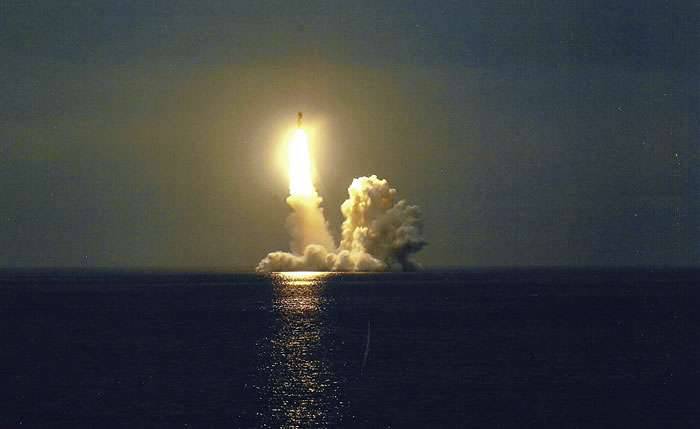
An American military expert, Harry Casianis, a member of the defense policy section of the US National Interest Center and a member of the Potomac Foundation’s national security section, in an article published in The National Interest, which specializes in United States national security issues, claims today that “Russia doubled promoting your naval fleet. Moscow is developing an even more deadly class of submarines, which, due to their low noise, are superior to their predecessors. ” According to Harry Casianis, Russian Lada-type submarines are capable of destroying the American fleet.
Of course, the overseas expert is mistaken: the Russian Navy currently cannot send US Navy ships to the bottom, since it is inferior to them in terms of total power and number of combat units. The submarines of the 677 "Lada" project will not cope with this task. However, the Russian fleet is undoubtedly fully capable of eliminating the United States itself. According to the Chinese naval expert Yin Zho, “Russia is the only country that can destroy the United States with its naval nuclear weapons».
HARRY KAZIANIS ERROR
Yes, twelve Russian nuclear-powered strategic missile submarines (SSBN) of the Kalmar, 667BDRM Dolphin, and Borey 667BDRM R-XNMX-CHNMX-NMNXXMNHXMNHXXMNHXXMNHXXMNMX-NNMX-NNMX-NNMX-NNMX-NNMX-NNMX-NNXX-NNXX-NNXX-NNXX-NNXX-NNXX-NNXX-BNYX-NNXX-NNXX-NNXX-NNXX-NNXX-NNXX-NNXX-NNXX-NNXX-NMN “Sinev” or P-955RMU29 “Liner”, as well as P-02 “Bulava” with three to ten nuclear warheads of individual guidance, can, if not wipe the United States off the world map, then make this country completely incapable. And the situation in this area will only get worse.
As is known, the basis of the Russian strategic forces is made up of the Strategic Missile Forces (RVSN). In the coming years, they will be replenished with the mine and mobile ICBMs of the new generation Yars, as well as the newest Rubezh mobile complex with missiles equipped with maneuvering hypersonic warheads. According to specialists, it will take at least 50 SM-3 interceptors to intercept one such missile. A bit later, the Barguzin combat railway missile system and the heavy Sarmat ICBMs will be commissioned by the Russian Strategic Missile Forces with a launch mass of 210 t, which will allow 10 hypersonic 750 units each to be “taken on board” and attack the US not only through the Northern, but also South Pole.
Since the United States does not abandon the dream of creating a global anti-missile shield, the naval strategic nuclear forces (NSNF) of Russia are also being improved. Their advantages are obvious: high secrecy, mobility and choice of positions in the oceans, from where the enemy's attack is little expected. In recent years, the Russian Navy deployed three SSBNs of the 955 "Borey" project with the SL-C of the P-30 "Bulava". At present, four SSBNs of the improved 955A project are in various stages of construction, and the laying of the eighth boat of the series is planned for July of this year. At the same time, work is underway to upgrade the Bulava SLBM in order to expand its capabilities to overcome existing and prospective missile defense systems.

The SSBNs of the 955 and 955А projects are intended to replace the three nuclear-powered submarine missile-carriers of the 667BDR project in the Pacific and, in part, the SSBNs of the 667BDRM project in the Northern Fleet, which currently form the basis of the Russian NSFM. Then, obviously, the construction of even more sophisticated submarines of the 955B project with the new missile complex will begin.
Nevertheless, the feverish attempts by the United States to improve missile defense are forcing the military-political leadership of Russia, Russian scientists and designers to look for fundamentally new tools to overcome missile defense. This, for example, aviation the inconspicuous strategic Kh-102 cruise missiles with a firing range of up to 5500 km, the non-nuclear versions of which — the Kh-101 — demonstrated high accuracy and efficiency in attacking targets of the Islamic State terrorist organization banned in Russia. Among the promising new products is the Status-6 ocean multi-purpose system, which became known last November. It is intended to defeat "important enemy economic facilities in the coastal area and inflict guaranteed unacceptable damage on the territory of the country by creating zones of extensive radioactive contamination unsuitable for long-term military, economic, economic and other activities in these zones." The arming of this new type of naval underwater strategic weapon is expected in 2019-2023.
The Russian Navy has other means of strategic deterrence. We mean sea-based cruise missiles. Their effectiveness was confirmed by the diesel-electric submarine B-237 "Rostov-on-Don" of the 06363 "Halibut" project. She with high accuracy hit the 3М14 of the Caliber-Submarine missiles at the targets in Syria, where the terrorists launched their activities.
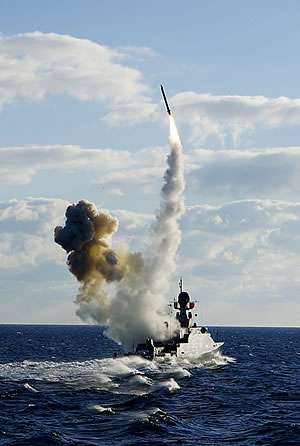
The presence of such missiles gives the naval forces greater flexibility. They can attack a variety of coastal targets: port terminals, oil and gas storage facilities, industrial facilities, military bases, headquarters and command posts, state or regional government bodies - to different depths of the enemy’s territory with ordinary or nuclear charges. Therefore, raising the question of whether the fleet of one country can defeat the navy of another at sea, if it does not lose its meaning, then, in any case, it levels its content. Why hide in the depths, chasing ships and ships, perform complex maneuvers and constructions, invent clever tactics, and put yourself at considerable risk if you can find a "quiet pool" in the sea or ocean and inflict deadly blows on the enemy?
In the second half of December last year, the US Navy intelligence report “Russian Navy. Historical transformation ”, in which are placed two very impressive schemes. The first shows the radii of destruction by Caliber-NK cruise missiles, which can be launched by Russian surface ships from the Caspian, Black, Baltic and Barents Seas. With a flight range of 1000 miles, that is, about 1852 km (note that a number of authoritative sources claim that the maximum range of these cruise missiles is 2000 km and even 2500 km), the territory of all of Europe will fall under their attacks, with the exception of Spain and Portugal, most of the states of Central Asia, as well as a number of countries in the Middle East. The second diagram shows how Japan, Korea, and Alaska will become “victims” of Caliber-NK missiles. Obviously, the report was compiled before the Rostov-on-Don submarine attacked the targets of a terrorist state with Caliber-PL missiles. Otherwise, a third scheme would have to be placed in this work, on which a good half of the territory of the United States would be shown, which could become the object of potential attacks by cruise missiles of Russian submarines.
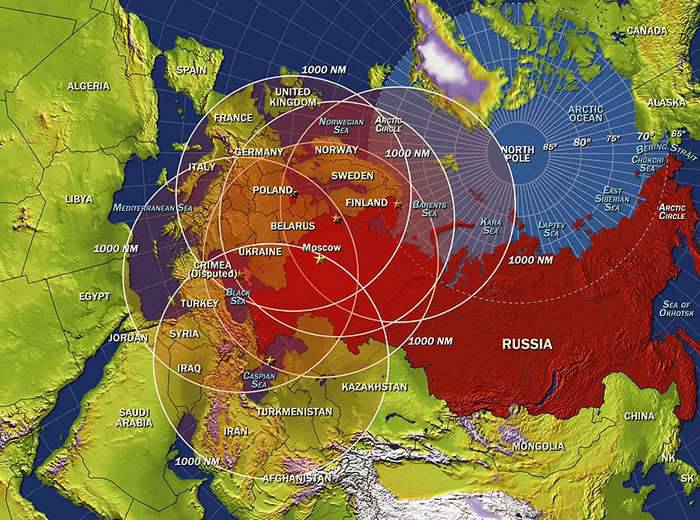
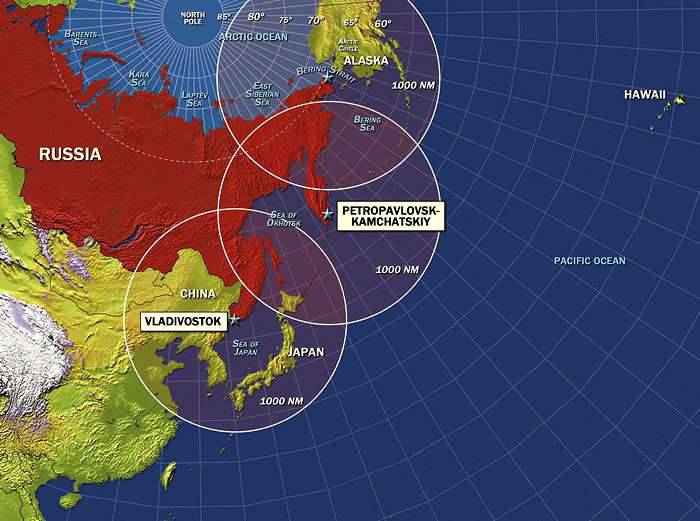
That is, the American expert Harry Kazianis sees the threat not where it actually comes from. He demonstrates a traditional, outdated, and as a result, an inertial and erroneous view of rivalry, confrontation and war at sea. And this view dominates today. Not only in the United States and Western Europe, but also east of it. This "inertia of style" is based on the theory of Alfred Mahan (1840-1914) - rear admiral of the US Navy and author of a number, without exaggeration, of epoch-making works on the history of naval art, especially British art.
According to Mahan, sea power (Sea Power) - the most important factor in the struggle for world leadership, and the conquest of supremacy at sea - the main condition for victory in any war. At the end of the 19th and the beginning of the 20th centuries, the world hegemon, even the world monopolist, was Great Britain. From the era of Queen Elizabeth (1533-1603), this island nation waged a fierce struggle for the possession of the sea. And actually got her way. However, at the turn of the XIX-XX centuries, young Germany began to “press” it, which ultimately led to the First World War. She, by the way, demonstrated a serious "erosion" of the ideas of Mahan. If Berlin had relied not on linear forces, as the postulates of the American theorist demanded, but on the all-out development of submarines, it would certainly have been possible to bring London to its knees. But this did not happen. The results of the Great War are known. Germany temporarily dropped out of the great powers. Few people remember this now, but after the end of World War I, the main opposing sides in the next world war were Great Britain and the new young contender for world hegemony - the United States, which had a significant fleet and powerful industry. If it were not for the revanchist "revival" of Germany under the banner of fascism and the militarist frenzy of imperial Japan, it would surely have happened.

The Second World War at sea was also fierce, but in the course of it, the battleships so beloved by Mahan finally left the stage. Submarines and aircraft carriers began to dominate. On the latter, as it passed the functions of battleships.
In the post-war era, a new hegemon - the US Navy - defied the Soviet Navy. This happened at the moment of the next stage of the military-technical revolution, when the conventional power industry was replaced by nuclear power, rockets to guns, and nuclear warheads to powder. At the head of the Navy of the USSR from 1956 to 1985 was an outstanding theorist and practitioner of "neomechanism" - Admiral of the fleet of the Soviet Union Sergey Gorshkov. “New thinking”, “perestroika” and the subsequent collapse of a great power put an end to intense rivalry on the seas of the two powers.
At the beginning of the 1990s, the United States, who emerged victorious in the Cold War, seemed to finally have the right to call itself No. XXUMX power in the world. Of course, it was not customary to talk about it out loud, but Washington felt this sensation as an axiom. Although in competition with the "Soviets" the United States undermined its economic power.
The short and in many ways imaginary right of the strong is reflected in naval construction. Due to overheating of the budget, the wars in Iraq and Afghanistan were followed by cuts in allocations for military programs, including for the needs of the Navy. The ideas of “post-ehmanism” became popular, according to which the United States and other Western countries should have mainly police forces at sea. They are designed to perform mainly non-combat missions. These include the fight against pirates and drug trafficking, counter-terrorism and rescue operations, regulation of migration flows at sea, protection of fisheries, control of the exclusive economic zone, monitoring and protection of the environment, humanitarian tasks in coastal and archipelagic waters, and other similar functions. That is, we are talking about the creation, with the participation of military fleets, of the "most-favored-nation at sea" for the United States and its close allies.
There was a fashion for ships that only with a certain stretch can be called combat. These are, for example, the widespread patrol ships of the open sea (OPV) in the world. They are inexpensive and carry purely symbolic weapons, but have decent seaworthiness and cruising range. In fact, OPV took over the functions of border guard ships, but they are not suitable for battle. In addition, a number can be attributed to the American littoral warships (LBK) with "wound" electronics and equipped with interchangeable modules with weapons. However, despite the enormous efforts and enormous costs, the modules are still not glued to the modules. However, despite the criticism from the sailors and the Congress, the laying and construction of the littorals, which were reclassified as frigates to raise their status, continue. Why? Here the inertia of style also works. About 900 large and small American corporations and companies are involved in their creation. This is not only big money, but also employment, and, therefore, politics. Therefore, the LBK program, contrary to common sense, is inertia doomed to continue.
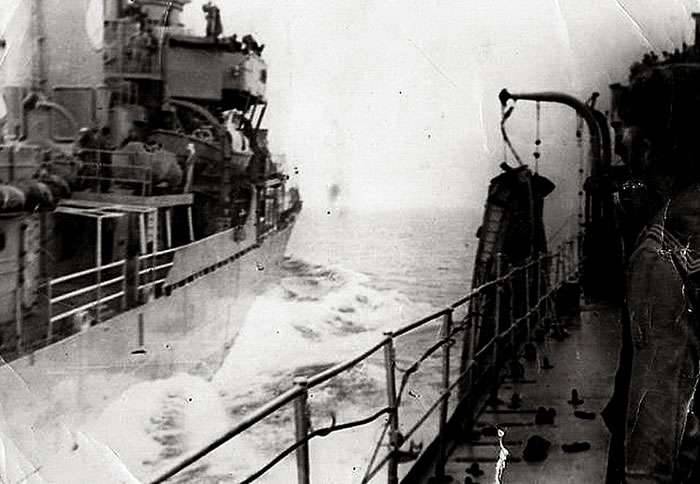
There are a number of other programs that today do not expand, but limit the capabilities of the American fleet. But let's not rub salt on the wounds.
When Alfred Mahan was building his theories based on the experience of sailing fleets, the first very imperfect submarines appeared. He, of course, could not even imagine that these ugly creatures would eventually have the opportunity to attack the entire territory of the United States, destroying the former notions of sea power.
“PALTHUS” + “LADA” = “KALINA”
It would be wrong to say that all the postulates of the teachings of Mahan are outdated. Some of them are relevant in our time. For example, the fact that the defense of their shores is better to start off the coast of the enemy. Only now this principle can and should be interpreted differently. Even a weaker fleet, but with an adequate number of nuclear and non-nuclear submarines armed with ballistic and cruise missiles, can pose a real threat to a more powerful naval state.
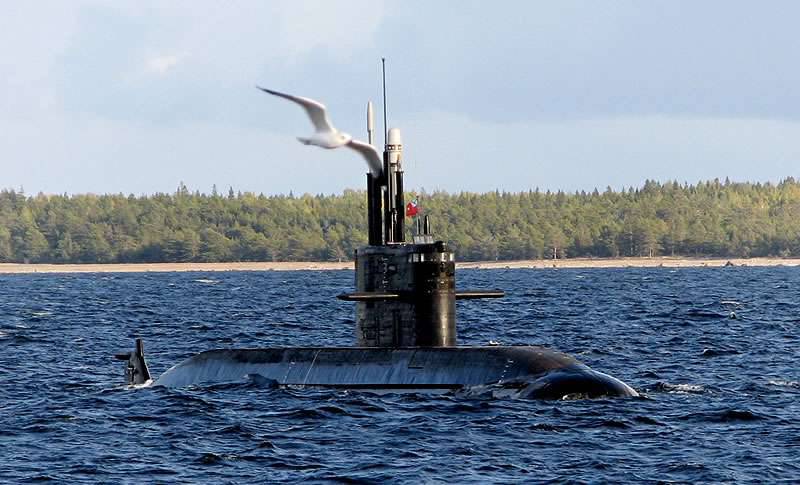
It should be noted here that the diesel-electric submarine of the 677 project “Lada”, which was called the main threat to the US Navy as Harry Kazianis, indeed, due to its low noise level, surpasses modern domestic and foreign analogues. Which is not surprising. After all, initially it was conceived as a “murderer of its kind”, that is, as anti-submarine - to protect its bases and ports. Then it was brought to the level of multi-purpose. However, the “generic features” remained, including quite modest dimensions (length - 66,8 m, diameter of durable case - 7,1 m). For long ocean voyages, even equipped with modern automation, which reduced the crew to 35 people, the boat is not very suitable because of the crowded spaces. Obviously, therefore, the command of the Russian Navy decided to limit the series to three units intended for operations in the Baltic.
At the same time, the 06363 diesel-electric submarine diesel engine project - the latest version of the world famous submarines of the 877 / 636 family “Halibut” (according to the Western classification) shows the highest qualities among the boats of its class. That is why a sensible decision was made not to limit ourselves to a series of six units for the Black Sea Fleet, but to build six more diesel-electric submarines for the Pacific Fleet according to a slightly modified project that more fully meets the requirements of this theater. This intention is explained by the need to “overcome the backlog of the submarine forces of Russia in Japan in the post-Soviet period”. Indeed, the Land of the Rising Sun, which has the third largest combat potential fleet in the Pacific, today has very modern submarines. "Halibut" with cruise missiles "Caliber-Submarine" can have a sobering effect on those Japanese politicians who are raving about the return of the "northern territories". And not only on them. If necessary, new Russian submarines can be deployed for strategic deterrence off the coast of the United States.
Nevertheless, the Russian Navy is in dire need of a non-nuclear submarine of a new generation. And such a ship is already being created by Rubin Central Design Bureau. Little is known about the appearance of a future NNL, whose project received the cipher “Kalina”. But it can be assumed that it will embody the best features of the "Halibus" and "Lada": low noise, the ability to far "hear" the enemy, a long cruising range and depth of immersion, comfortable living conditions for the crew and powerful weapons.
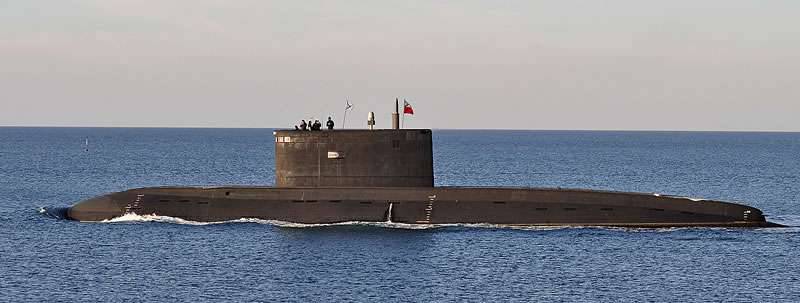
It is worth recalling that during the construction of the head "Lada" - diesel-electric submarine "St. Petersburg" - more than 130 samples of the latest radio electronic and shipboard equipment were installed on the boat. In fairness, one can not say that not all of this technique worked properly. However, most of it showed outstanding opportunities. And this technique, of course, will find its place on the “Kalina”.
Undoubtedly, an auxiliary air-independent power plant with electrochemical generators will be placed on the submarine, work on which is already being completed in Russia. It will allow the boat to be under water for a long time without floating on the surface. It is possible that energy-intensive lithium-ion batteries will also be installed on the Kalina for the development of high underwater speeds.
In addition to torpedo tubes through which you can shoot torpedoes, rocket-torpedoes and cruise missiles, and also lay mines, ten vertical launchers for the Kalibr-PL and Onyx cruise missiles will appear on the Kalina. Such a package of launchers was developed for the export version of the Lada - Amur-1650-type diesel-electric submarines. The fifth generation of naval base will provide for the placement of combat swimmers and their means of delivery to the place of work.
Do not forget about nuclear powered boats. The pace of their construction is inferior to the assembly of the diesel-electric submarines and nuclear-powered submarines, and the costs significantly exceed the amount of funds required for non-nuclear submarines. But they will continue to replenish the Russian fleet. "In 2016, priority will be given to strengthening nuclear" strategists "and nuclear multipurpose submarines in the Northern and Pacific fleets," Vice-Admiral Alexander Fedotenkov, deputy commander-in-chief of the Russian Navy, said recently. As already noted, this year the eighth strategic missile submarine of the 955 "Borey" project will be laid. The construction of the sixth multi-purpose nuclear submarine project 885 "Ash" will begin. A number of third-generation submarines to upgrade their combat capabilities will be upgraded.
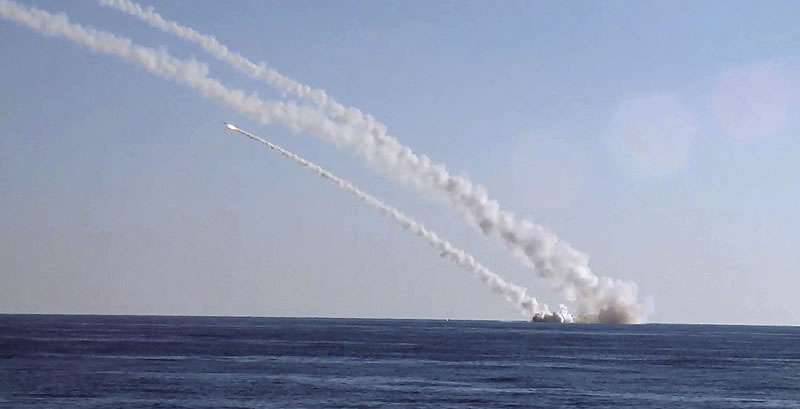
DISPUTES ON FIGURES AND CHINESE FACTOR
Speaking at a symposium of the United States Surface Forces Association in mid-January this year, US Secretary of the Navy Ray Meibus said that in the last seven years of his tenure as head of the US Navy, a record was set for fleet expansion. From 2009, the 84 ship and auxiliary ships were laid! The Republicans instantly responded to this speech by reminding the minister that last year the numerical strength of the US Navy fell to a record low - to 272 units.
During the time to which Maibus refers, nine multi-purpose nuclear submarines of the Virginia type (five in service), two nuclear aircraft carriers of the Gerald Ford type, nine missile destroyers of the Arleigh Burke type (two in the system) The 15 littoral warships (four in service), two universal assault ships of the type America (one in the ranks) and six landing ships-docks of the type San Antonio (four in the ranks). That is, it was all laid 43 warships, of which 18 already transferred to the Navy. The rest of the 84 are auxiliary vessels (41 unit) of the Shipping Command. This is very good, even wonderful, but cannot be compared with the pace of construction of ships in the PRC for the Navy of the People’s Liberation Army of China (PLA Navy).

Just when Ray Maibus boasted about the success of the US military shipbuilding, the official printed edition of the CPC Central Committee and the most influential Chinese newspaper, Renmin Ribao, reported that last year the total number of PLA Navy ships increased to 303, the number exceeded US Navy. Of course, there are qualitative differences between these largest fleets in the world. Most of the American warships are designed to act in the ocean zone, and the Chinese - in the near sea and focused mainly on the defense of their shores. The US Navy is significantly superior to the PLA Navy in terms of the quantity and quality of nuclear submarines, although it is inferior in the total number of submarines. At the same time, Chinese warships are carriers of powerful anti-ship missiles with a target range of up to 31-180 km, while the US Navy does not yet possess such weapons. Given the development of ground-based naval aviation and the presence of China’s coastal-based anti-ship ballistic missiles, the PLA Navy is more balanced than the United States Navy, which is currently not completely adapted to protect the shores of the United States.
And yet, according to Renmin Ribao, “The US Navy is still the most powerful naval military force in the world” - mainly due to the high level of informatization and network-centric systems, the development of electronic warfare. According to the Chinese newspaper, "The US Navy is at the forefront of innovation around the world and is" a generation ahead of the military technology of other countries. " We add that it is impossible not to notice the obvious "secondary character" of Chinese naval armaments, which in large part are traces of American, Russian and Western European designs and technologies. However, this approach allows you to save time and money. That is why, according to Chinese naval expert Yin Kyaw, “in recent years, the Chinese fleet has been narrowing the gap in the development of military technologies with the United States.”
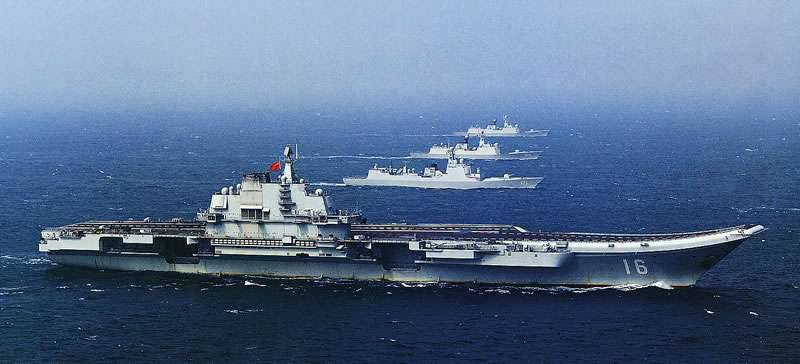
And we don’t even have to talk about the quantitative side of rivalry. For 2015, the US Navy received from the industry one multi-purpose submarine and three littoral warships. Moreover, the latter can be attributed to full-fledged combat units only with a large amount of stretch. Over the past year, the PLA Navy has been replenished with three missile destroyers of the 052С and 052D types with automatic combat control systems similar to the American Aegis, four 054А type frigates and six rocket corvettes (small frigates according to the Chinese classification) of the Type 056 / 056А type, and the XRUMX / 072A-type anti-aircraft corvettes (small frigates according to the Chinese classification) of the Type 2 / 3A type and the XNUMXA / XNUMXA-type anti-aircraft missile systems (small frigates - according to the Chinese classification) type XNUMX / XNUMXA and the same taps with the XNUMXA type and the XNUMXA-type anti-aircraft missile systems (small frigates - according to the Chinese classification) type XNUMX / XNUMXА and in the course of the first year. . We do not have data on the entry into the PLA Navy of new NPS and NNS, but, undoubtedly, the Chinese fleet “added” XNUMX-XNUMX submarines.
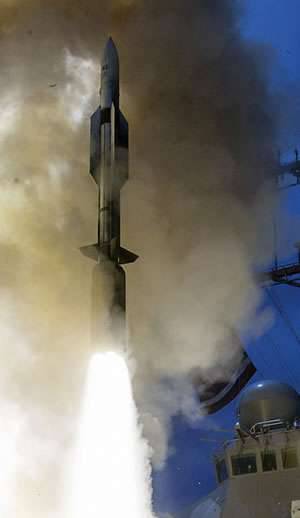
In other words, the Americans are losing to the Chinese with a big score in terms of fleet construction. In the future, the situation for Washington will not improve, but only worsen. In five or six years, the United States will finally lose to China in terms of the quantity and quality of warships. Attempts by the United States to strengthen its position in the western Pacific Ocean will end in complete failure.
The command of the US Navy understands this. Against the background of the Chinese factor and the tremendous effect produced by the attacks of the Caliber-NK and Caliber-Submarines cruise missiles of the Russian fleet against the Islamic State, a series of meetings, conferences and symposia took place in the United States. crisis. They were confused and confused. In order to somehow calm the situation, the head of the US naval operations (Commander-in-Chief), Admiral John Richardson, published a document entitled “Project for Maintaining Naval Superiority” (Design for Maintaining Maritime Superiority). “Russia and China are improving their military capabilities, allowing them to act as world powers,” the document says. “Their goals are supported by a growing arsenal of high-class combat equipment, many of which are focused on our vulnerabilities.” To maintain superiority at sea, Admiral John Richardson proposes to act in four ways. First, to strengthen the US naval power, including through the construction of strategic nuclear submarines, the development of information warfare and the creation of new weapons systems. Secondly, it is necessary to raise the level of training of personnel and command personnel of the fleet. And in order to achieve this, thirdly, you need to pay special attention to the motivation of the staff. The fourth postulate of Richardson draws attention to the further strengthening of cooperation and interaction with partners of the US Navy.
There is nothing fundamentally new in the “Project for the maintenance of naval superiority” of the chief of naval operations. All four of the above theses can be easily found in the existing doctrinal documents and plans for the construction of the US Navy. Admiral John Richardson failed to overcome the inertia of American strategic dogma style. After all, by and large, today the United States needs to think not about providing “freedom of navigation” in the oceans and maintaining naval superiority, but about a strategy to protect its shores.
However, the United States is taking steps to strengthen its naval power. If it is impossible to catch up with China in the number of ships, it was considered in the Pentagon, then it is necessary to bypass it in terms of firing range and the quality of naval armaments. As US Secretary of Defense Ashton Carter said, the five-year plan to strengthen the Navy provides for the allocation of $ 2 billion for the purchase of Tomahawk cruise missiles by 4000, including, apparently, in the anti-ship variant. It should be added that construction of multi-purpose submarines of the Virginia type Block IV, with which the Tomahawk КР ammunition will be brought to 40, will begin soon. $ 2,9 billion is planned to be released on the development of new modifications and on the purchase of X-NUMX missiles SM-650. This long-range missile defense system with a speed of flight 6 M is designed to hit air targets at a distance of up to 3,5 km. Now it is modified in such a way that the SM-240 can strike the surface ships of the enemy. Finally, about $ 6 million is expected to be spent on promising low-profile radars for LRASM anti-ship missiles with firing ranges from airplanes to 927 km, and from offshore platforms - to 930 km. In the "list of Carter" there are other naval weapons systems.
The command of the US Navy intends to determine by the end of this year the type of RCC that will be placed on the littoral warships reclassified into frigates. Among the applicants are called ASM NSM with a firing range of up to 180 km, a Harpoon Next Generation rocket, which is designed to hit targets at a range of up to 240 km and already called LRASM in inclined launchers. Of these, only NSM really flies. Two others are under development.
In the US, the concept of Distributed Lethality is being explored. She envisages the arming of US amphibious ships, auxiliary and even civilian ships with anti-ship missiles, which, according to the plan, should increase the strike capabilities of the US fleet and partially relieve the destroyers who are now the Navy’s workhorses.
But all these measures do not answer the main question - how will the US Navy protect the territory of the country from the growing threats like a snowball.
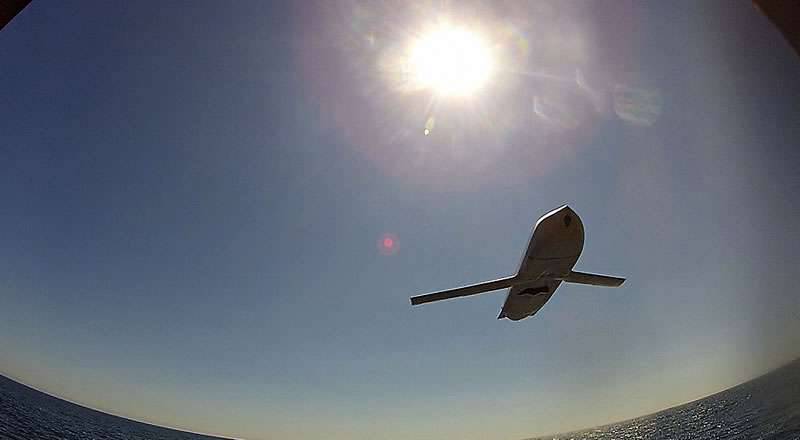
MULTIPOLAR WORLD AND “SPLITTING” OF MARINE POWER
But even if China surpasses the United States in the number of warships, not only in the sea, but also in the ocean, and this, in our opinion, will happen without fail and in the near future, this will not mean that China will dominate the World Ocean and establish its dominance. It only strengthens its position and only. For a variety of reasons, China will not be able to achieve the status of the world's dominant naval power.
First, attention should be paid to the geographical factor. The continental territory of China from the east, that is, from sea directions, is surrounded by a chain of island and peninsular states. A number of them are direct allies of the United States, for example, Japan and South Korea, while others, undoubtedly, more to Washington than to Beijing.
The PRC, thanks to such a geographical position, practically managed to gain superiority in the seas adjacent to the country's territory. The island states create a natural barrier to the wider penetration of hostile fleets to the Chinese shores. On the other hand, these islands interfere with the flexible deployment of the PLA Navy in the ocean zone. In the straits, it is easier and easier to arrange ambushes and defensive lines against surface ships and submarines of the PRC Navy. In other words, the Chinese fleet has limited opportunities for access to the open spaces of the Pacific Ocean.
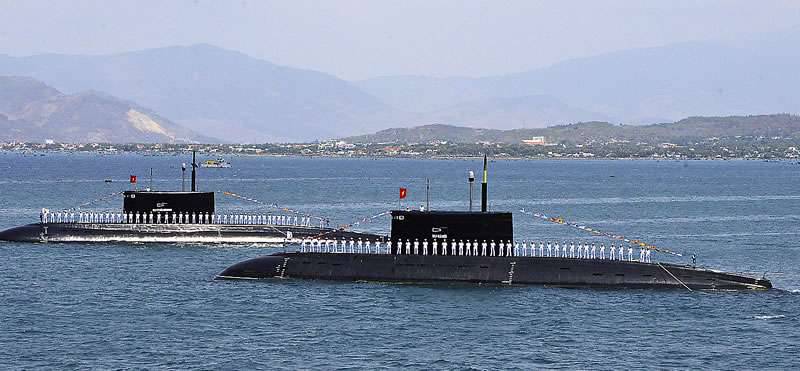
Here it is necessary to take into account the fact that the closest allies of Washington in this region - Japan, South Korea and Taiwan - have powerful fleets. The so-called Japanese Self-Defense Forces (IDSS), if we put the naval strategic forces of the nuclear powers out of the list, are third in combat potential not only in the Pacific Ocean, but also in the world. They are catching up with the South Korean Navy. Moreover, the fleet of the Republic of Korea even has advantages over the United States through the arming of surface ships and submarines with cruise missiles designed to strike at coastal targets.
Among the states that the US especially wants to see in its “club” of anti-Chinese allies, is Vietnam. Washington is cleverly courting the NRW authorities. And not by chance. Vietnam has a relatively small but powerful arsenal of naval weapons, mostly of Russian production. For example, the Yakhont missiles of the Bastion mobile coastal complex. The Vietnamese Navy can strike them at the main naval base of the Southern Navy PLA Sanya Navy on Hainan Island in the South China Sea. In this base, in particular, the newest Chinese nuclear-powered submarines of the 094 type Jin with JL-2 SLBMs with a range of 7400 km that allow China to deliver nuclear strikes on the continental United States.
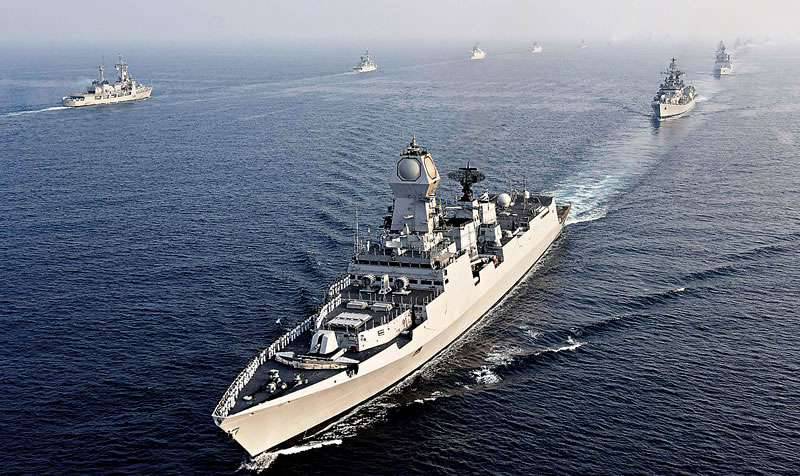
3 February this year at the naval base Cam Ranh arrived diesel-electric submarine Danang - the fifth submarine of the project 06361, of the six ordered for the Navy of Vietnam at the Admiralty Shipyards. These diesel-electric submarines are almost the same as Russian submarines of the 06363 project and, in addition to torpedoes and mines, can carry the Club-S cruise missiles (an export version of the Caliber-PL) designed to destroy marine and coastal targets. No country in Southeast Asia has such powerful means of destruction.
The impact potential of the Navy SRV is complemented by the 12418 “Molniya” project missile boats, the construction of which continues in Vietnamese shipyards. Each boat is armed with 16 anti-ship missiles of the Uran-E complex with a target range of up to 130 km. It is possible to equip boats with X-35UE Super-Uran rockets with a range of up to 260 km and a combined guidance system including an inertial system, a satellite navigation unit and a radar active-passive homing head, providing high accuracy and noise immunity in the conditions of electronic countermeasures.
Vietnamese frigates of the type "Cheetah-3.9" are armed with the same missiles (two are in the Navy formation and two are being built). Negotiations are underway on the acquisition by Vietnam of the third pair of such ships. According to Renat Mistakhov, the general director of the Zelenodolsk plant named after A.M. Gorky, which is assembling frigates of the type "Cheetah-3.9", they can be equipped with the Club-N cruise missiles (the export version of the Caliber-NK), at the request of the customer.
Along with the Vietnamese fleet, the Singapore Navy has significant potential deterrence, controlling the Straits of Malacca, vital for China. The very close "country of thousands of islands" - Indonesia - can not be attributed to pro-American states, as well as to the pro-Chinese satellites. Such equidistance does not mean non-interference in world and regional affairs. Obviously, Jakarta’s position in conflict situations will be determined by considerations of benefits and feasibility for the interests of the country. And since Indonesia occupies an important strategic position at the junction of the Pacific and Indian Oceans and is rich in hydrocarbon and mineral resources, the country's authorities are paying considerable attention to strengthening the fleet. For many decades, the Navy of this state was like a “dump” of outdated ships built in various countries, which created many difficulties for their logistics and maintenance. Now the situation is gradually straightening primarily due to the construction of ships in their shipyards. Rocket and patrol boats, landing ships and frigates of the Indonesian assembly are already arriving. Next in line is the construction of submarines. Yes, now Indonesian boats and ships are equipped with foreign-made weapons, engines and electronics, but this fact does not underestimate Jakarta’s stride in strengthening its national naval forces.
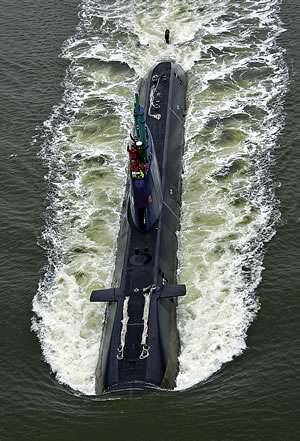
Also, the course towards the development of an exclusively national industrial base of naval armaments is also being approved in Delhi, which undoubtedly aims to turn the Indian Ocean into an “Indian lake”. To achieve this goal is still far, but now the Indian Navy is among the largest and strongest in the world. And there is no doubt that the PLA Navy will be very uncomfortable in this area.
For the accelerated development of naval technologies and their introduction into practice in Delhi, they adopted a wide development of joint development and production of armaments with foreign countries. It is enough to recall the creation, together with Russia, of the BRAHMOS anti-ship missiles, together with Israel — the Barak 8 air defense missile system, with France — Kalvari-type diesel-electric submarines based on the Scorpene submarines and with the United States — a promising atomic aircraft carrier.
Indian Navy currently include a multi-purpose submarines, 13 diesel-electric submarines, an aircraft carrier, missile destroyers 10, 14 frigates, corvettes and 26 large missile boats, minesweepers 6, 10 patrol the high seas ships, patrol boats 125, 20 landing ships, a large number of auxiliary vessels. In the near future, the arrival of a SSBN, an aircraft carrier, several diesel-electric submarines, missile destroyers, frigates and corvettes is expected. That is, the number of modern ships of the Indian Navy, of course, occupy a leading position in the world. The PLA Navy, they are noticeably inferior only in the number of submarines and submarines. And it is not by chance that the Chinese nuclear submarines went to the Indian Ocean.
It seems to us that the Indian Navy did not choose the best option for the serial construction of new diesel-electric submarines. And not only because the program is carried out with a large lag, and not because only the last two submarines of the Kalvari type in a series of six units will receive air-independent power plants. The fact is that these submarines are not adapted to equip with BRAHMOS cruise missiles, and it will take time to create a smaller version of the latter, which can be fired from torpedo tubes. In addition, the mini-BRAHMOS will inevitably have to reduce the firing range and the power of the warhead, which will make them almost identical to the SM.39 Exocet anti-ship missiles, which are already in service with Kalvari-type submarines.
Eight S20-type naval submarines (type 041) with Stirling air-independent power plants, armed with YJ-82 cruise missiles, purchased by Pakistan from China may well constrain the operations of the Indian fleet. Delhi’s desire to establish dominance in the Indian Ocean is unhappy not only in Islamabad, but also in Tehran. In any case, control over the western part of this water area in Iran is sought to be left behind, developing and building a modern fleet. Anti-Iranian sanctions hindered this process until recently, but now the barriers are being removed. In turn, the threat to Iran itself today is created not only and not so much by the US Navy, as by the navy of Israel, whose command is extremely concerned about the calls of the leadership of the Islamic Republic to deal with the Jewish state.
12 January this year in the naval base Haifa arrived in Germany, the naval submarine Rahav - the second type Tanin (Dolphin II) with an air-independent power plant on fuel cells and the fifth family of Dolphin. At the ceremony of meeting the submarine, Israeli Prime Minister Benjamin Netanyahu said: "Our submarine fleet primarily serves to deter enemies who want to destroy us." All those present understood these words of the head of government unequivocally. As the Israeli newspaper Maariv noted in this connection, “the Israeli submarine fleet was created for the sake of deterrence, and first of all for the sake of the main goal of providing an Israeli nuclear retaliatory strike.” It is a question of retaliation or preemptive - do not undertake to judge. But, of course, the Israeli Navy submarines are able to carry out such a strike.

Dolphin diesel submarines and Tanin submarines, in addition to the six traditional 533-mm torpedo tubes, are equipped with four 650-mm guns designed for firing Popeye Turbo cruise missiles with 200 ct nuclear warheads. Missile firing range - to 1500 km. That is, it can hit targets in Iran, even from the Mediterranean Sea. But Israeli submarines were repeatedly seen in the Suez Canal when following for patrols in the Indian Ocean.
In 2019, the Dakar submarine, the sixth in the series, will go into service. Already, the small navy of Israel has a powerful strike potential with which the fleets of many European naval powers are incomparable. And in the plans of Tel Aviv - bringing the number of submarines to ten units.
Another example of a deceptively weak fleet is the North Korean Navy. They consist mostly of ships, submarines and boats of outdated projects. For the development of the fleet, Pyongyang has neither modern technology nor money. However, the DPRK managed to build a Sinp'o missile diesel-electric submarine with the KN-11 SLBM. The next tests of this rocket took place on 21 December last year. They are recognized as successful by American experts. The development of an SLBM will take another two or three years. And then the DPRK could threaten a nuclear attack from under the waters of Pearl Harbor or even cities on the west coast of the United States.
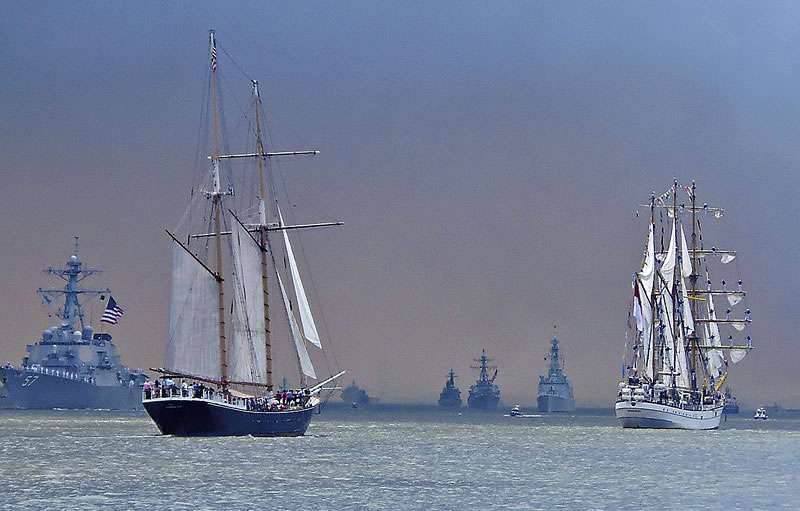
Summing up, we can state that today we are not only witnessing the erosion of sea power “according to Mahane”, but also its obvious “splitting”. In a multipolar world, no single power, even the most powerful economically and militarily, is capable of being the hegemon of the sea. There will definitely be a country or group of countries that will undermine any effort to establish dominance in the oceans. Moreover, modern means of warfare can put a state on the brink of destruction, which, relying on sea power, will attempt to dictate its conditions to peace.
- Alexander BRAIN
- http://www.nationaldefense.ru/includes/periodics/geopolitics/2016/0222/205417849/detail.shtml
Information